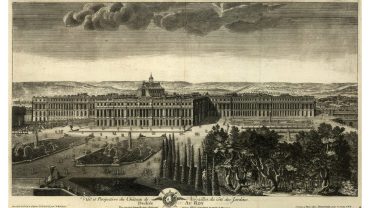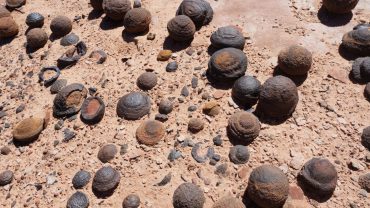For decades, a mysterious black goo has plagued the roads of Caracas, turning bustling highways into perilous tracks. Appearing without warning, this strange, slippery substance has caused accidents, baffled scientists, and sparked countless theories. It’s known as La Mancha Negra meaning the black stain. And it remains one of Venezuela’s most perplexing mysteries.
So, what caused La Mancha Negra? Is it a natural anomaly, a man-made catastrophe, or something more sinister? Fasten your seatbelts, because we’re here to discover all about the black stain that’s haunted Venezuela’s highways.
La Mancha Negra Begins

Simón Bolívar International Airport, Venezuela (Credit: Matthew Micah Wright via Getty Images)
In 1986, road workers on the Caracas-La Guaira highway, a vital route connecting the capital city to Simón Bolívar International Airport, noticed a peculiar 160-foot smudge on the asphalt. Initially dismissed as a minor issue, this black goo rapidly expanded, eventually covering an eight-mile stretch of the highway.
This Venezuela goo substance seemed to have a mind of its own, appearing predominantly in tunnels and uphill slopes near the airport. After wreaking havoc for several years, La Mancha Negra, meaning the black stain, seemingly disappeared in the late 1990s, only to reappear in 2001. Its intermittent presence added another layer of mystery, leaving residents and authorities puzzled about the implications of La Mancha Negra meaning and its true nature and origin.
The Strange Venezuela Goo Substance

What is the mysterious black substance? (Credit: Philippe TURPIN via Getty Images)
Among the most mystifying aspects of La Mancha Negra are its unique properties. At times, its consistency has been compared to sticky substances like tar and chewing gum. On the other hand, it’s also reportedly slippery, making the road surface akin to driving on ice. Indeed, news reports told of numerous accidents caused by this black goo, as motorists struggled to maintain control of their vehicles, especially in areas where it was reportedly up to one inch thick.
Other curious behaviours included its reaction to various weather conditions and hot spots. For instance, the substance tended to expand in hot and rainy conditions and contract when the weather turned cold and dry. And it frequently appeared in tunnels and on uphill slopes, complicating traffic flow in critical areas.
Theories Behind the Phenomenon

Is La Mancha Negra oil seepage from underground reservoirs? (Credit: Larry Washburn via Getty Images)
So, what was behind the black stain Venezuela’s capital experienced? There are several theories, including:
Natural Oil Leak
Some have suggested that the black goo was the result of natural oil seepage from underground reservoirs. Seismic activity or human interference might have triggered this leakage. However, experts pointed out that such seepage would likely emerge from a single point rather than spread uniformly over an eight-mile stretch. Additionally, heavy oils typically settle underground rather than oozing onto the surface.
Pollutant Accumulation
Another hypothesis proposed that La Mancha Negra was a concoction of various pollutants, oil residues, industrial waste, and vehicle emissions mixed with rainwater. While plausible, this theory didn’t fully explain the substance’s unique properties or the specific locations in which it appeared.
Sewage-Induced Chemical Reactions
Some speculated that raw sewage might be causing a chemical breakdown of the road materials. The interaction between sewage and asphalt could potentially produce a slimy residue. However, this theory lacked substantial evidence and didn’t account for the goo’s weather-dependent behaviour.
Fungal or Microbial Growth
A more unconventional idea proposed that a type of fungus or microbial life was thriving on the asphalt, producing a slimy byproduct. Laboratory tests, however, failed to identify any biological organisms within samples of La Mancha Negra, making this theory less credible.
Substandard Asphalt & Emulsifiers
The most widely accepted theory centres on the use of substandard asphalt mixed with emulsifiers. In an attempt to cut costs, road builders may have used a bad batch of asphalt treated with chemicals to achieve certain characteristics. Over time, the components could have separated, causing one phase to surface as a black, greasy stain. Critics of this theory argue that asphalt degradation under normal temperatures is unusual. However, if the asphalt contained additional residues or reactive chemicals, other atmospheric triggers may have facilitated this separation.
Tackling the Black Goo

Pressure washing didn't work (Credit: Albert Engeln via Getty Images)
Confronted with this hazardous anomaly, the Venezuelan government employed various strategies to eliminate La Mancha Negra:
- Pressure Washing: High-pressure water jets were used in hopes of dislodging the substance from the road surface.
- Detergent Scrubbing: Workers scrubbed the roads with industrial detergents to break down the goo.
- Scraping and Resurfacing: Sections of the highway were scraped clean and resurfaced with new asphalt.
- Pulverised Limestone: The goo was covered with limestone powder to absorb the grease and improve traction.
Despite these efforts, the black stain proved resilient, reappearing time and again. Removing and replacing asphalt is a labour-intensive and costly process, and the recurrence of La Mancha Negra made it a persistent problem. However, there have been no recent incidents. Some speculate that this may be due to construction projects replacing the roads in question.
The Unresolved Enigma of La Mancha Negra

What is La Mancha Negra? (Credit: jayk7 via Getty Images)
La Mancha Negra remains one of Venezuela’s most intriguing mysteries. While several theories attempt to explain its origin, none have been definitively proven. Whether it was due to substandard asphalt, environmental pollutants, or other unknown factors, this Venezuela goo substance serves as a reminder of the complexities that can arise when nature and human infrastructure intersect.












